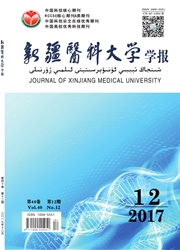

 中文摘要:
中文摘要:
目的:探讨时间序列 ARIMA 乘积季节模型拟合新疆布鲁氏菌病新发数量的可行性,并且作短期预测,为布鲁氏菌病预防与控制提供决策依据。方法采用具有季节性的自回归移动平均(ARIMA(p,d,q)(P, D,Q)s)模型拟合2009年1月-2014年6月期间新疆人间布鲁氏菌病每月新发数量,并进行模型参数估计、诊断和预测。结果 ARIMA(0,1,2)(1,1,0)12模型较好地拟合出新疆人间布鲁氏菌病新发数量的季节性和趋势性变化规律,平均绝对百分比误差 MAPE=25.13%,预测出2015年6月人间布鲁氏菌病新发数量最大1812(95%CI:1567~2057)例。结论 ARIMA(0,1,2)(1,1,0)12模型可用于拟合并且短期预测新疆人间布鲁氏菌病新发数量,为相关政府部门提供可靠信息。
 英文摘要:
英文摘要:
Objective To establish an ARIMA model to fitting the monthly data of new human brucellosis from January 2009 to June 2014 in Xinjiang,which presents the seasonal trend.Meanwhile,to make a short-term prediction for the new human brucellosis,and provide evidence for the prevention and control of it.Methods Applied the seasonal autoregressive moving average (ARIMA (p,d,q)(P,D,Q)S)mod-el to fit the new human brucellosis cases.Selected the optimal model based on the minimum AIC and BIC criterion.Subsequently,to verify the significance of parameters and residuals.Results ARIMA (0,1,2) (1,1,0)12 model can be better fitting the monthly number of new human brucellosis cases and its general trend in Xinjiang.The Mean Absolute Percentage Error (MAPE)is 25.13%.The maximum value of new human brucellosis is predicted as 1812 (95%CI:1567-2057)in June 2015.Conclusion ARIMA (0,1, 2)(1,1,0)12 model can be used to simulate and forecast the monthly number of new human brucellosis in Xinjiang,which may provide the reliable information of prevention and control for the relevant government departments.
 同期刊论文项目
同期刊论文项目
 同项目期刊论文
同项目期刊论文
 期刊信息
期刊信息
